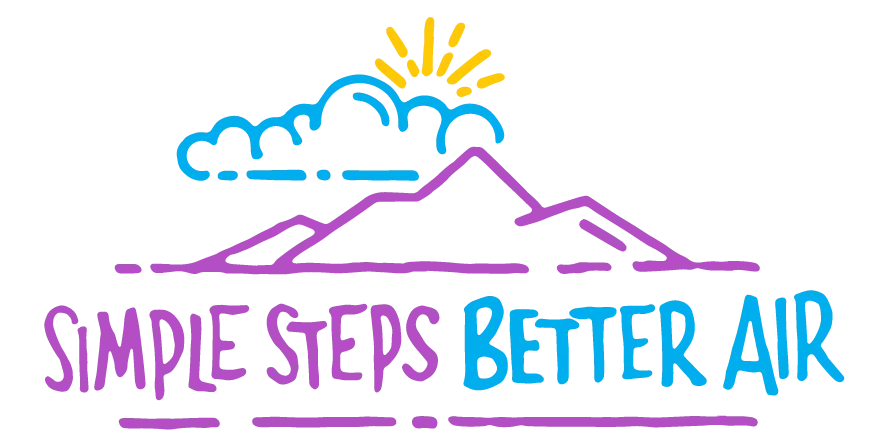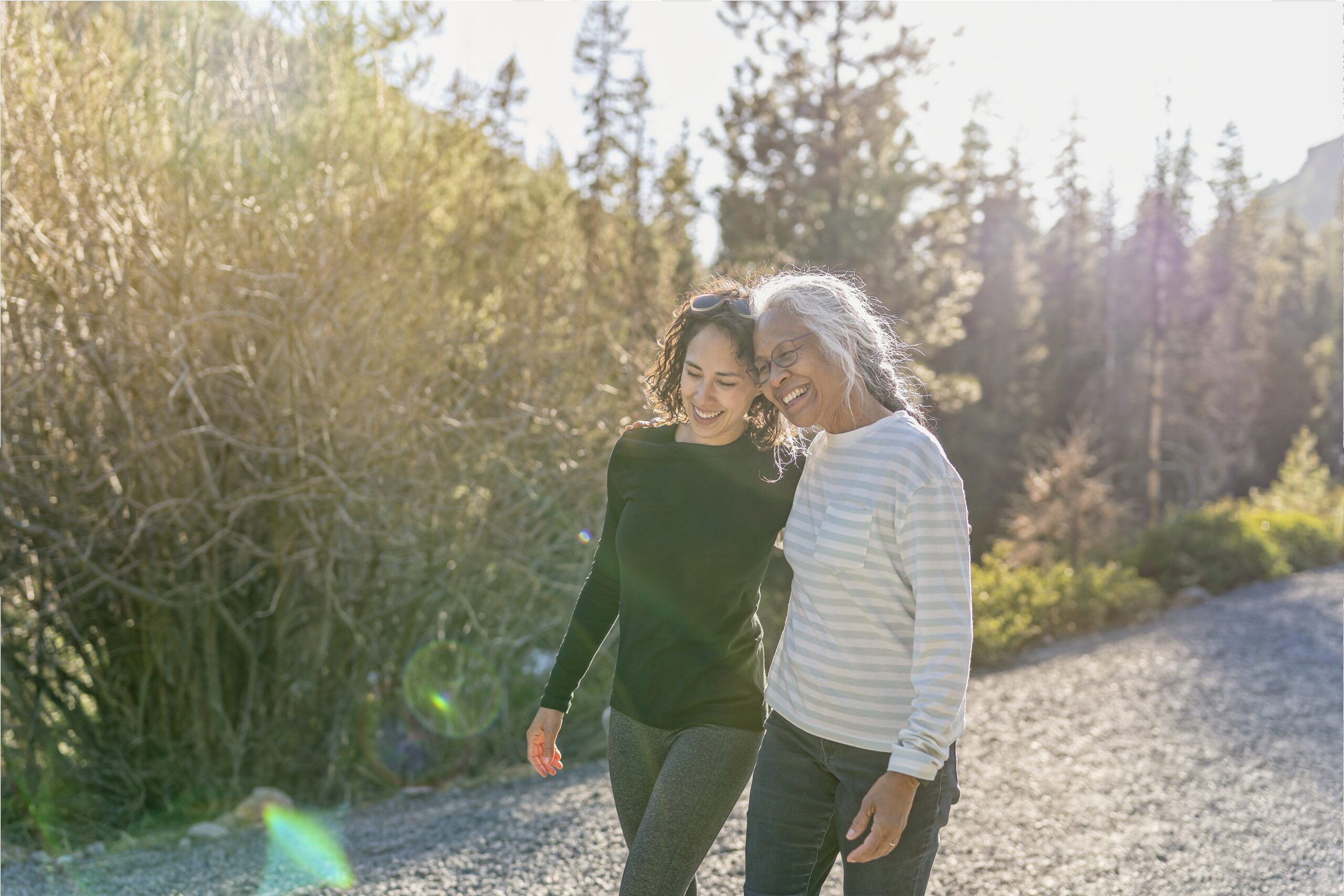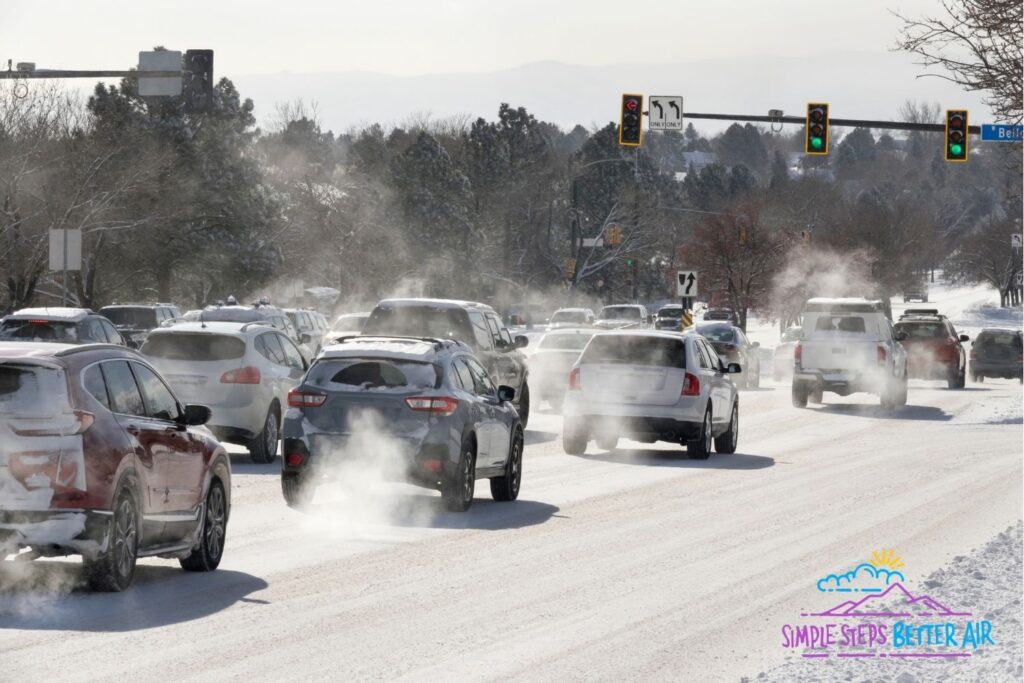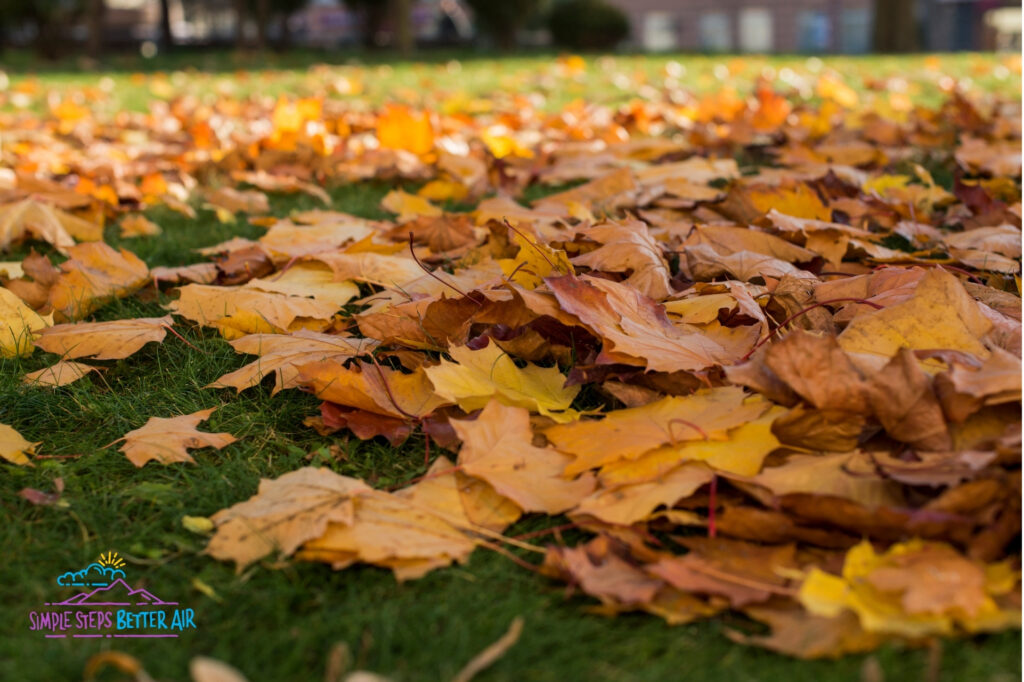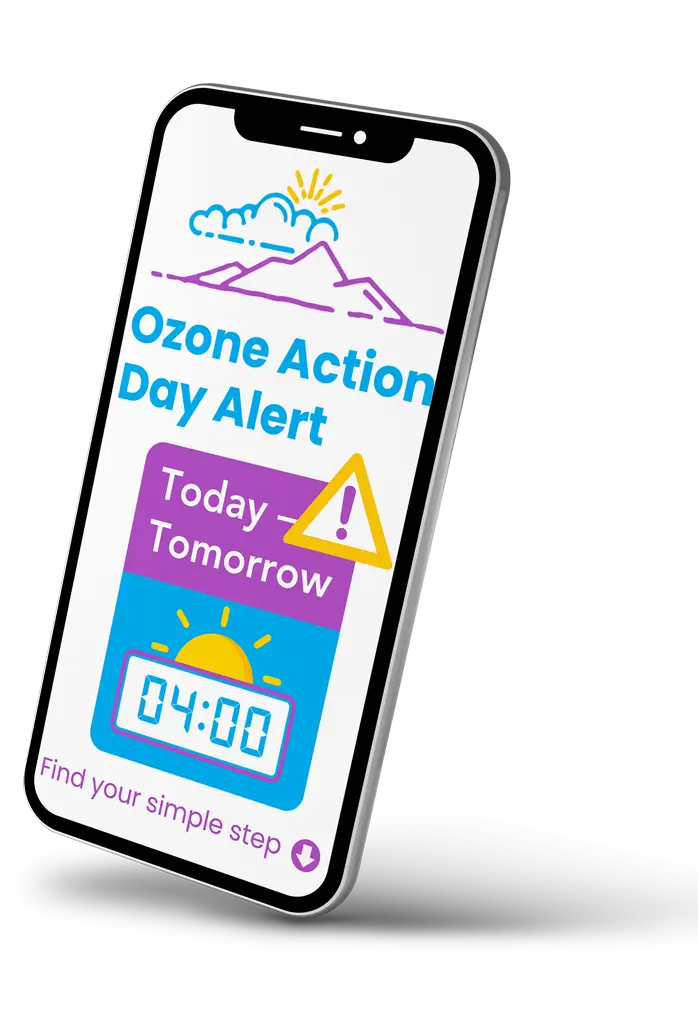Our beautiful state of Colorado is known for its majestic mountains, its plethora of outdoor opportunities, and often, its fresh mountain air. Each summer, however, Colorado’s Front Range region – where much of its population lives – is affected by higher levels of ground-level ozone and wildfire smoke than is considered healthy by current federal standards.
So what should new and long-term residents of Colorado alike know about our air quality? And what can they do to breathe better?
Simple Steps. Better Air. spoke with Nick Torres, an advocacy director with the American Lung Association, where he works toward policies at the local, state, and national levels that promote lung health and support people living with chronic lung disease like asthma, COPD, and lung cancer, to learn more.
The Lung Association and the RAQC both work on the Front Range’s summer air quality issue of ground-level ozone. Why is ozone such an important pollutant for us all to be breathing less of?
Ozone is one of the most widespread air pollutants. It used to be known more commonly as smog. It forms when gases from vehicle tailpipes, industrial smokestacks, oil and gas facilities, and many other pollution sources come in contact with sunlight.
When we inhale it, it aggressively attacks our lungs by reacting chemically with lung tissue. In the short-term, this means many people will experience immediate breathing problems like shortness of breath, wheezing, asthma attacks, and increased risk of respiratory infections. Long-term exposure to ozone or smog is associated with metabolic disorders, nervous system issues, reduced fertility and poor birth outcomes, and even premature death.
We had some wildfire smoke recently this summer, which is also a health concern here in the Front Range. How concerning are our levels of particle pollution?
Particle pollution, and specifically fine particle pollution, or PM2.5, is another of the most widespread and dangerous air pollutants. For more than 25 years now, we’ve published our State of the Air report, which provides grades and rankings on particle pollution and ozone pollution for counties and cities across the country. It’s the most widely read and cited report that we produce.
Over the years, we’ve noted the ways that climate change has made conditions increasingly more favorable for wildfire activity, both in terms of frequency and severity. In our 2025 report, we found that a shocking 56.3 million people across 140 counties in 25 states experienced severely polluted “Very Unhealthy” (Purple) and “Hazardous” (Maroon) days for PM2.5. This represents an increase of 24 million people compared with our 2024 report.
Here in the Front Range, fortunately we’ve seen significant improvements in particle pollution since we experienced our worst-ever levels a few years ago. In our 2025 State of the Air report, the Denver metro area was no longer listed among the 25 worst cities in the country for particle pollution. There is some variability within the region though. For example, while Boulder and Denver Counties have shown significant improvements the past few years, they each earned an F for short-term particle pollution. On the other hand, Adams County is below the threshold for unhealthy particle pollution days, earning a D, but is trending in the wrong direction over the past decade.
Here at the RAQC, we work on outdoor air quality. But indoor air quality is also really important for our lung health! What do you wish more people knew about indoor air quality?
Whether at home, work, or school, there are so many things we can do to improve our indoor air quality. A good way to think about it is: 1. Source Control (remove the source of the pollution); then 2. Ventilation (draw in more fresh outdoor air); and finally; 3. Air Cleaning (remove pollutants from indoor air).
Generally speaking, one of the most important things we can do is to transition away from indoor combustion (woodstoves, gas burning appliances like stoves, smoking/vaping, etc.) If switching to an electric appliance isn’t feasible, we always recommend that everyone ensure their appliances are properly vented outdoors – including range hoods that don’t just blow air from the microwave. It’s also good to open a window while you’re cooking, if possible.
For anyone with allergies, asthma, or other respiratory conditions, other triggers that could cause breathing difficulties might be dust, mold, or even cleaning supplies.
Another topic that people often wonder about is using an indoor air cleaner (we try to avoid the term air purifier, which is a misnomer). These can be helpful, particularly for homes with more vulnerable members in the family, and during high particle pollution days like wildfire events. There are many options available, including effective DIY versions. We recommend that people check for certification with the California Air Resources Board and don’t use a model that uses ultraviolet radiation, ionizers, or produces ozone.
When I moved to Colorado, I heard about radon for the first time. Why is it important?
Radon is a naturally occurring, odorless, colorless, cancer-causing gas that is produced as a result of uranium decay in soil. It’s the second leading cause of lung cancer after smoking. Once formed, radon enters a building through cracks in walls, basement floors, foundations and other openings.
While radon has been found in high amounts in homes in every state, Colorado is among the states with the highest percentage of homes (46%) that exceed EPA’s action level, when mitigation is strongly recommended. What’s important to know is that your home can have elevated levels of radon while your neighbor’s home does not. Testing is the only way to know if radon is a problem in your home.
Fortunately, testing for radon is easy and low cost, and Colorado has an excellent radon program at CDPHE that offers testing support and even mitigation assistance for low-income households.
In January 2025, Colorado also identified five air toxics as “priority” chemicals, and the state is in the process of setting health-based standards for them. Is this something the American Lung Association in Colorado is working on?
The Lung Association supported HB22-1244, which included new requirements for reporting and monitoring air toxics and set things in motion for setting health-based standards. One of the most important pieces of this policy shift is ensuring adequate public health protections and accountability on behalf of the state’s most vulnerable communities located near the major sources of these toxic air pollutants. We’ll be monitoring the progress as the rulemaking process continues.
What’s something you wish every Coloradan knew about air quality?
Although public awareness is improving, there are still a lot of people who don’t fully recognize the real health impacts of poor air quality, and how some communities are affected more severely. From pregnant people, to children, or the elderly, or anyone with asthma or cardiovascular disease, every family likely has at least one person who is at heightened risk.
What resources does the Lung Association in Colorado have for people who want to learn more or get involved?
We have two big events coming up this fall. Moving Mountains on September 13 is a patient symposium dedicated to supporting Coloradans affected by lung disease, especially those who rely on supplemental oxygen (and their caregivers).
Run the Rocks on October 12 is our 20th annual fundraising event when we take over Red Rocks and host a 5k and 1.3 mile run/walk to bring awareness to our mission and have some fun while we do it.
Another great resource available at no cost is our Lung Helpline, available at Lung.org/helpline or 1-800-LUNGUSA. Staffed with certified experts and health professionals, they can answer questions on anything from quitting smoking to vaccine questions, to lung procedures and treatments.
How else can Coloradans get involved with the Lung Association?
Sign up for our Lung Action Network – the easiest way to do it is to sign one of our active petitions at Lung.org/policy-advocacy/take-action/action-alerts. Right now, we have open petitions on industrial pollution, locomotive emissions, and greenhouse gas, to name a few.
We work to advocate for policies at the local, state, and national level that can improve air quality and support people living with lung disease and their families. And we need your help to do it.
Another great way is to share your story – particularly if you or a loved one has been affected by lung disease in some way. By elevating these stories with the public and elected officials, we can share the urgency of enacting policies that improve the air we breathe. Lung.org/get-involved/share-your-story.
Disclaimer: Simple Steps. Better Air. blog posts and Q&A’s with partner organizations are for educational purposes, and do not necessarily represent the views of the RAQC.

Kelsey Simpkins
Communications and Programs Manager
Regional Air Quality Council
